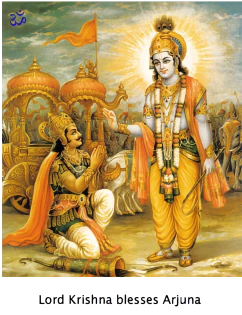
अन्त्यजो विप्रजातिश च एक एव सहोदरः एकयोनिप्रसूतस् च एकसाखेन जायते
antyajo viprajātiśa ca eka eva sahodaraḥ ekayoniprasūtas ca ekasākhena jāyate
In the Mahabharata, Yudhishthira says that it is difficult to find out the cast of persons on account of the mixture of castes. Men beget offspring in all sorts of women. So conduct is the only determining feature of caste according to the sages.
The four-fold order is designed for human evolution. There is nothing absolute about the case system which has changed its character in the process of history. Today it cannot be regarded as anything more than an insistence on a variety of ways in which the social purpose can be carried out. Functional groupings will never be out of date. As for marriages – they will happen among those who belong to more or less the same stage of cultural development. The present morbid condition of India broken into castes and sub-castes is opposed to the unity taught by the Gita, which stands for an organic as opposed to an atomistic conception of society.

Akartāram: non-doer. As the Supreme is unattached, He is said to be a non-doer. Works do not affect His changeless being, though He is the unseen background of all works.
Source (in part): Bhagavad Gita with commentary by Shankaracharya (in Hindi), Gita Press. Translated on 17th September, 2008 by the editors of eaglespace.com ©
